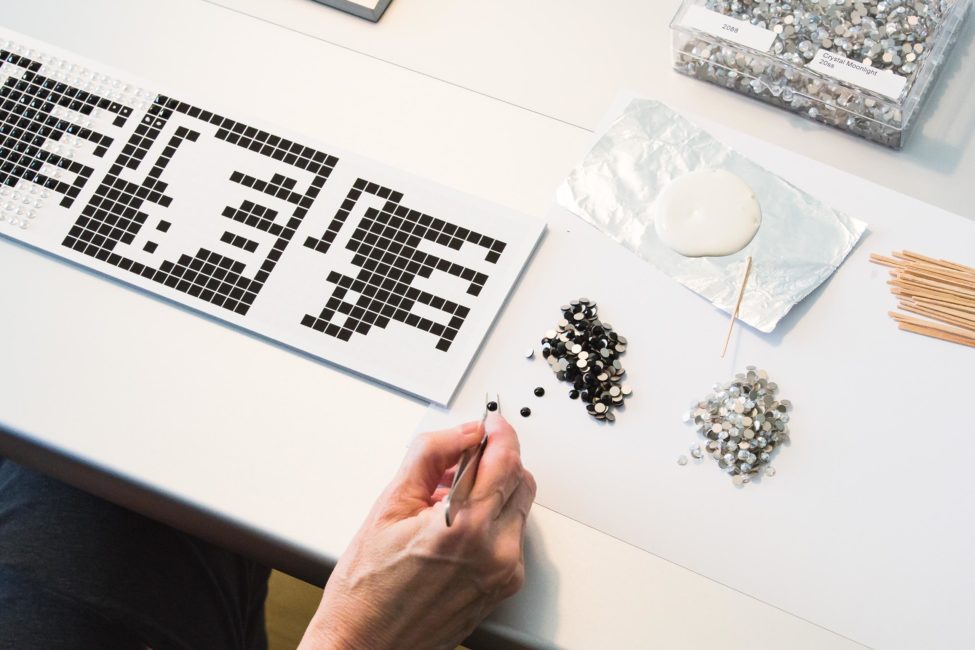I make crystal art by gluing crystals to giclee printed grids. The artworks on this website collectively contain 538,827 crystals. I glue each and every crystal myself.
A summary of my process is as follows:
1- First I pick a subject. This often involves extensive research.
2- Then I turn the subject into a grid. Much math is involved.
3- The grid is giclee printed and mounted on museum board. I don’t do this.
4- I glue the crystals to the grid using a tweezer and a wooden toothpick. Much time is involved.
5- The pieces are framed. I don’t do this either.

When I first started working with crystals, I encountered two major technical limitations that had to be dealt with.
The first limitation concerned size. In order to center each crystal precisely within its square, I had to be able to view the piece directly from above while working on it. To do this, each piece had to be relatively small. This was terribly disappointing, as, after years of making greeting cards, I really wanted to make larger work. So, I came up with a technique in which multiple small pieces, which I call components, are combined together within a single frame separated by strips of mat, which I call mullions. Recently, I have been creating installations consisting of multiple single component pieces each framed on its own. This is another way for me to make larger work.
The second limitation concerned color. Obviously, unlike a painter who can mix whatever color she likes, my palette is dictated by whatever the crystal manufacturers choose to produce. But the situation is actually more complicated than that. Crystals are highly reflective, and the color a crystal appears to be is profoundly influenced by both the color of the background and the colors of the surrounding crystals. I discovered, through much trial and error, that for the color of each crystal to be optimally seen and differentiated from the surrounding crystals, I would need to place each one on a colored background. The background colors aren’t chosen to match the crystal colors so much as to optimize them. After many hours of color correction, my printer and I developed a palette of approximately 150 colors that I call my paint box. Periodically, a vital color is discontinued and a frantic attempt to buy up remaining supply ensues.
Finally, this section wouldn’t be complete without mentioning my technical collaborators who are essential to this mad project of mine.